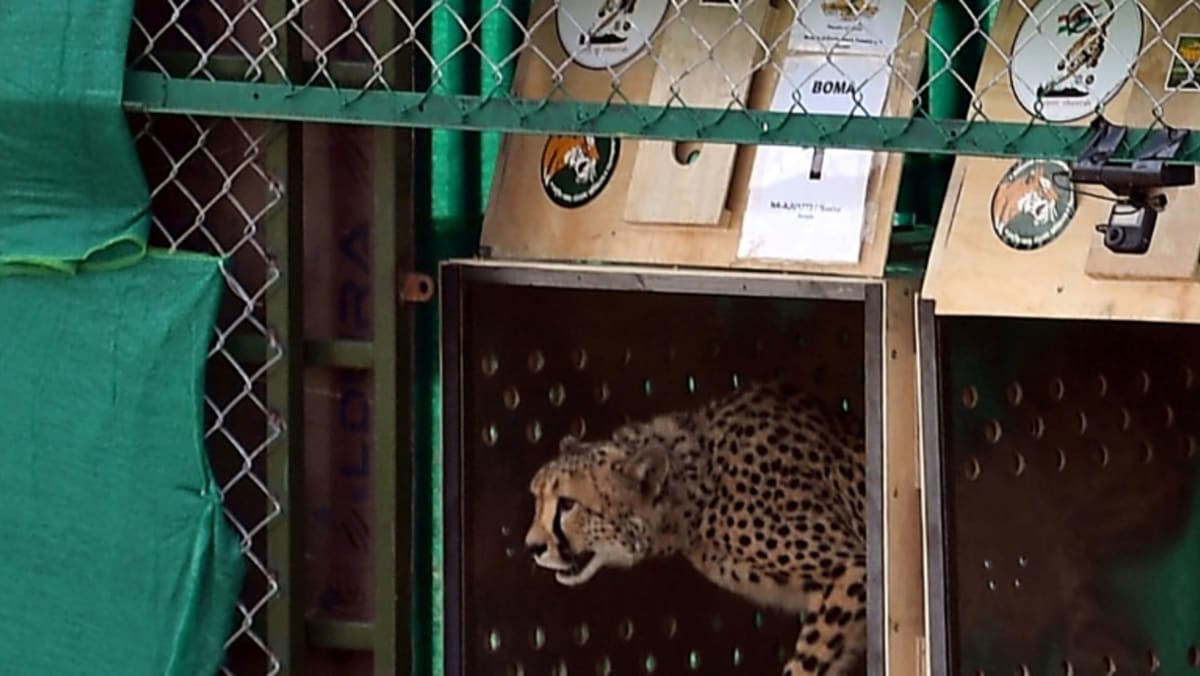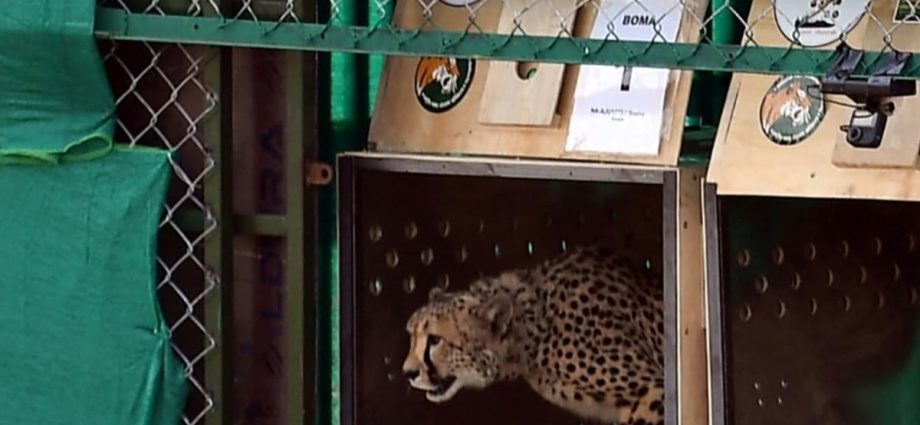
“I believe the prime minister has unfortunately been misled by some bureaucrats and experts,” he said.
“We neither have the expansive grassland habitats that cheetahs need nor other ecological conditions to attempt such a complicated reintroduction,” he said.
“This was a very good, headline-grabbing event but the harsh reality kicks in, as we are now witnessing after eight cheetahs have died.”
“DISAPPOINTING” START
Arjun Gopalaswamy, a wildlife and statistical ecologist who studies large carnivores, said there should be more transparency about the causes of death.
Media reports have cited officials saying some of the animals could have died as a result of infections caused by their radio tracking collars.
The project’s start was “disappointing”, Gopalaswamy told AFP, as seven out of the eight deaths had happened inside the enclosures “where such incidents were least anticipated”.
With one possible exception – a female killed by her partner while mating – a lack of information from authorities “obscures the primary causes behind all the deaths”, he said.
“From a scientific perspective, this ambiguity is worrisome as it prevents meaningful learning from these occurrences,” he said.
Scientists from the Cheetah Research Project at Leibniz-IZW in Namibia had earlier said the relocation programme ignored “spatial ecology”, as the Kuno National Park was much smaller than the spaces the big cats usually need to thrive.
The reintroduction is the first intercontinental relocation of cheetahs and the programme aims to bring in about 100 of the animals over the next decade.
Cheetahs are one of the oldest big cat species, with ancestors dating back about 8.5 million years, and they once roamed widely throughout Asia and Africa in great numbers.
But today, after their extinction from many countries across the Middle East and Asia, only around 7,000 remain, primarily in the African savannahs.

